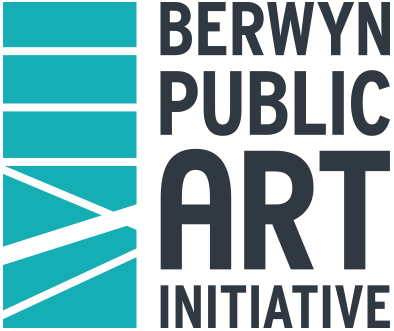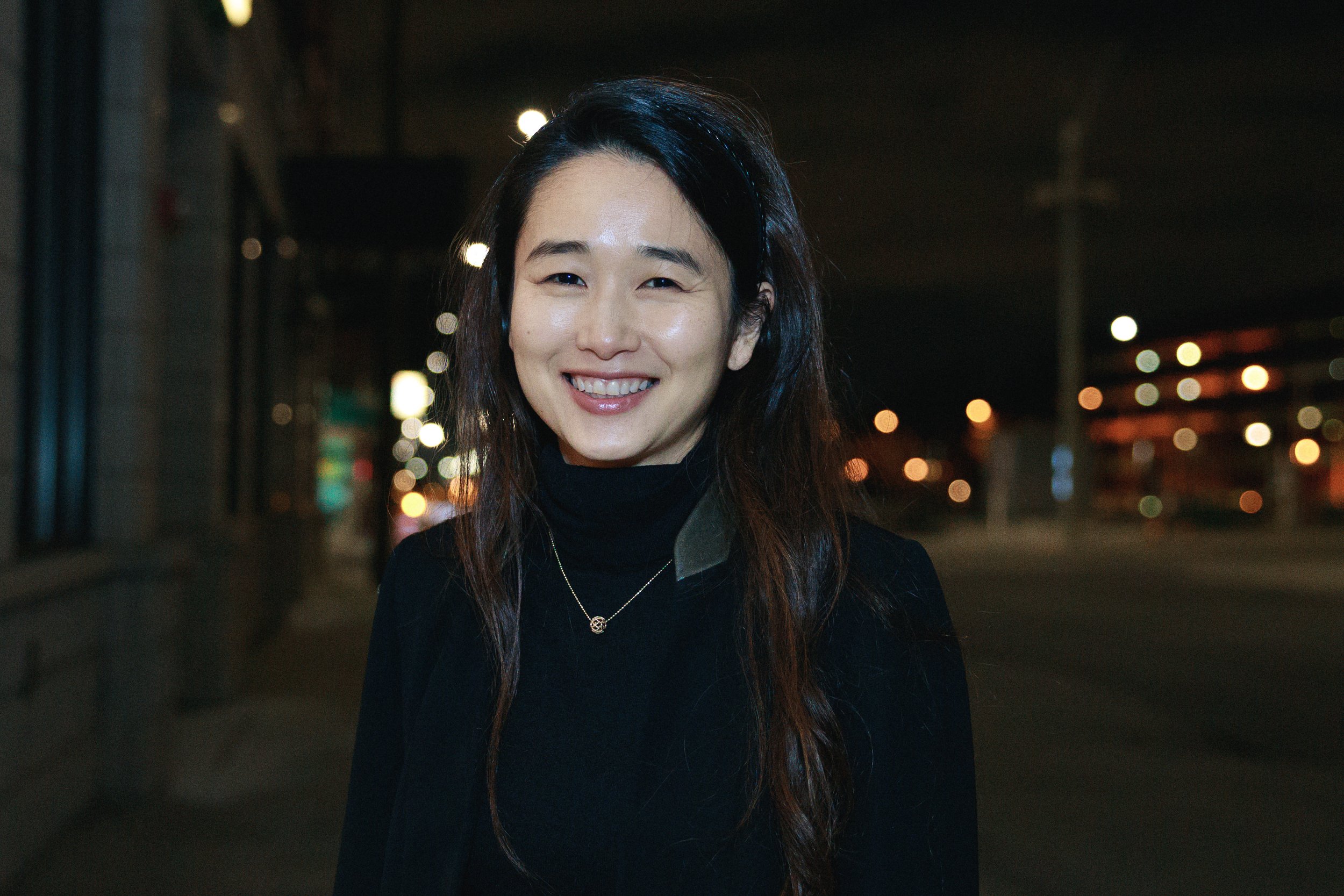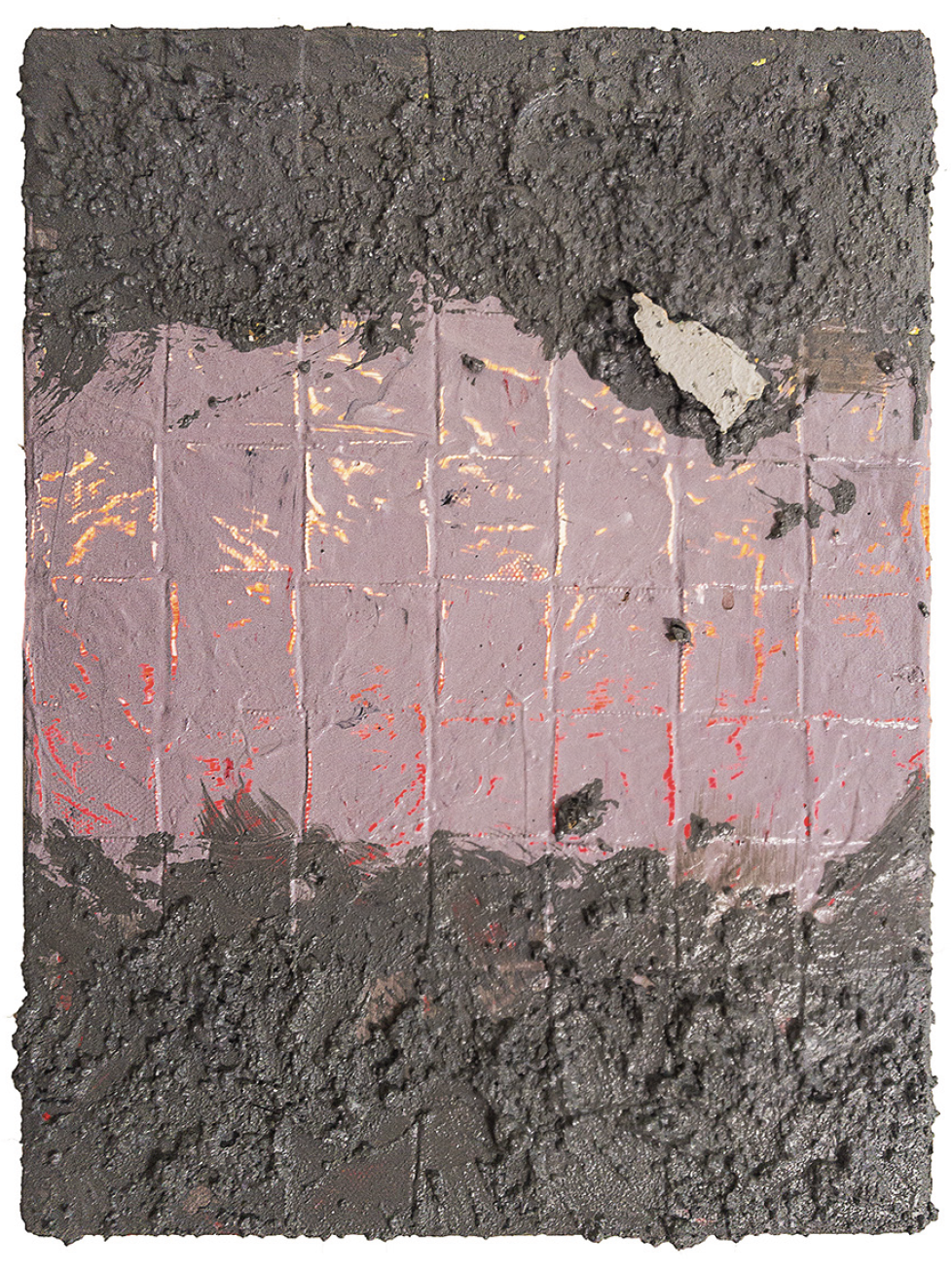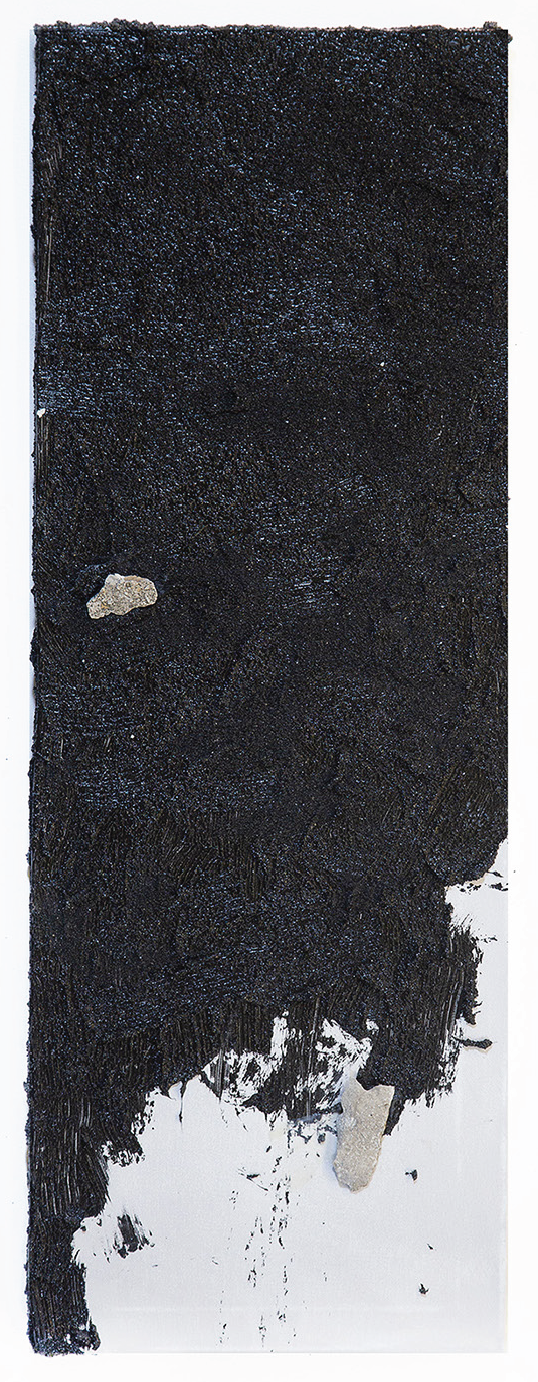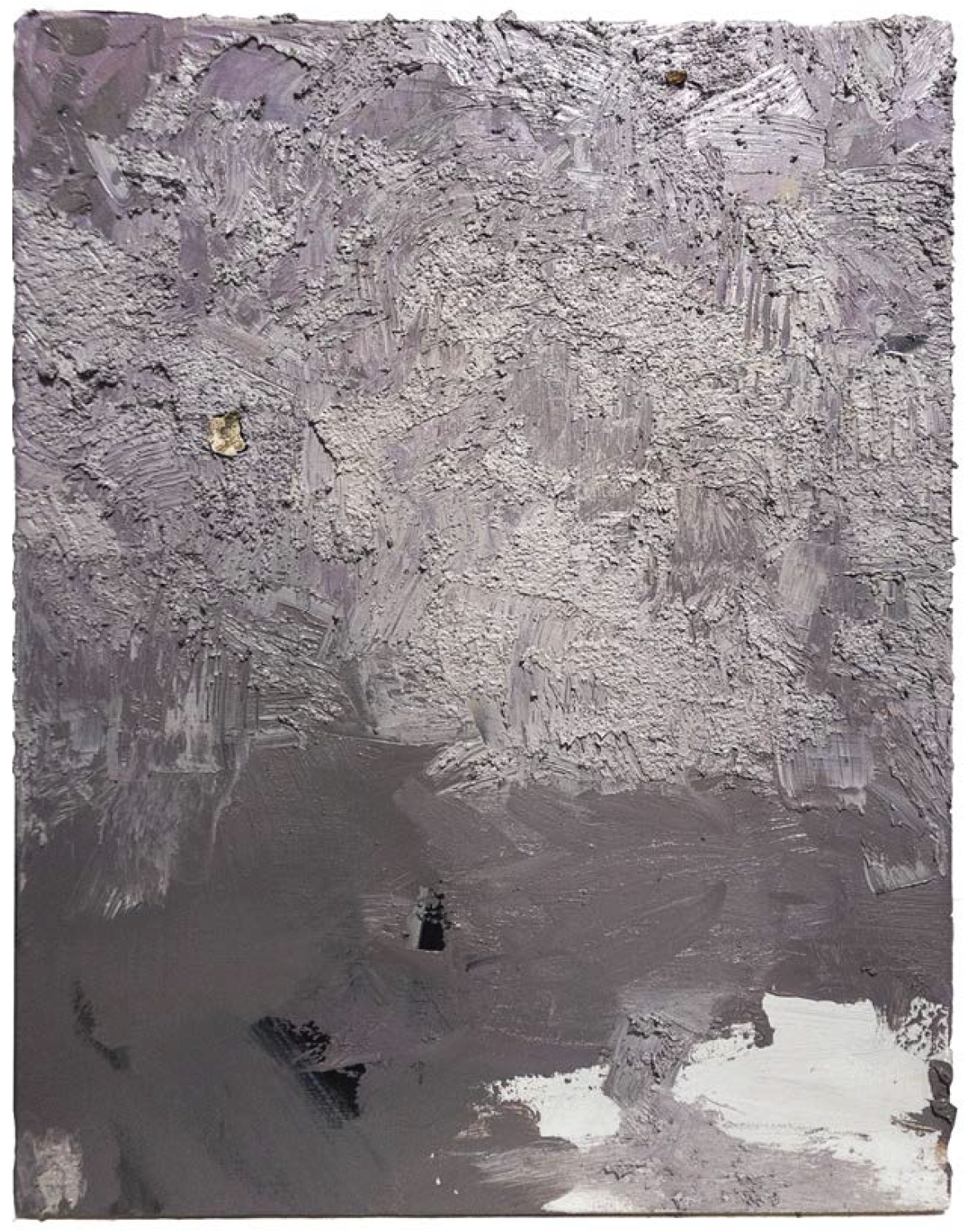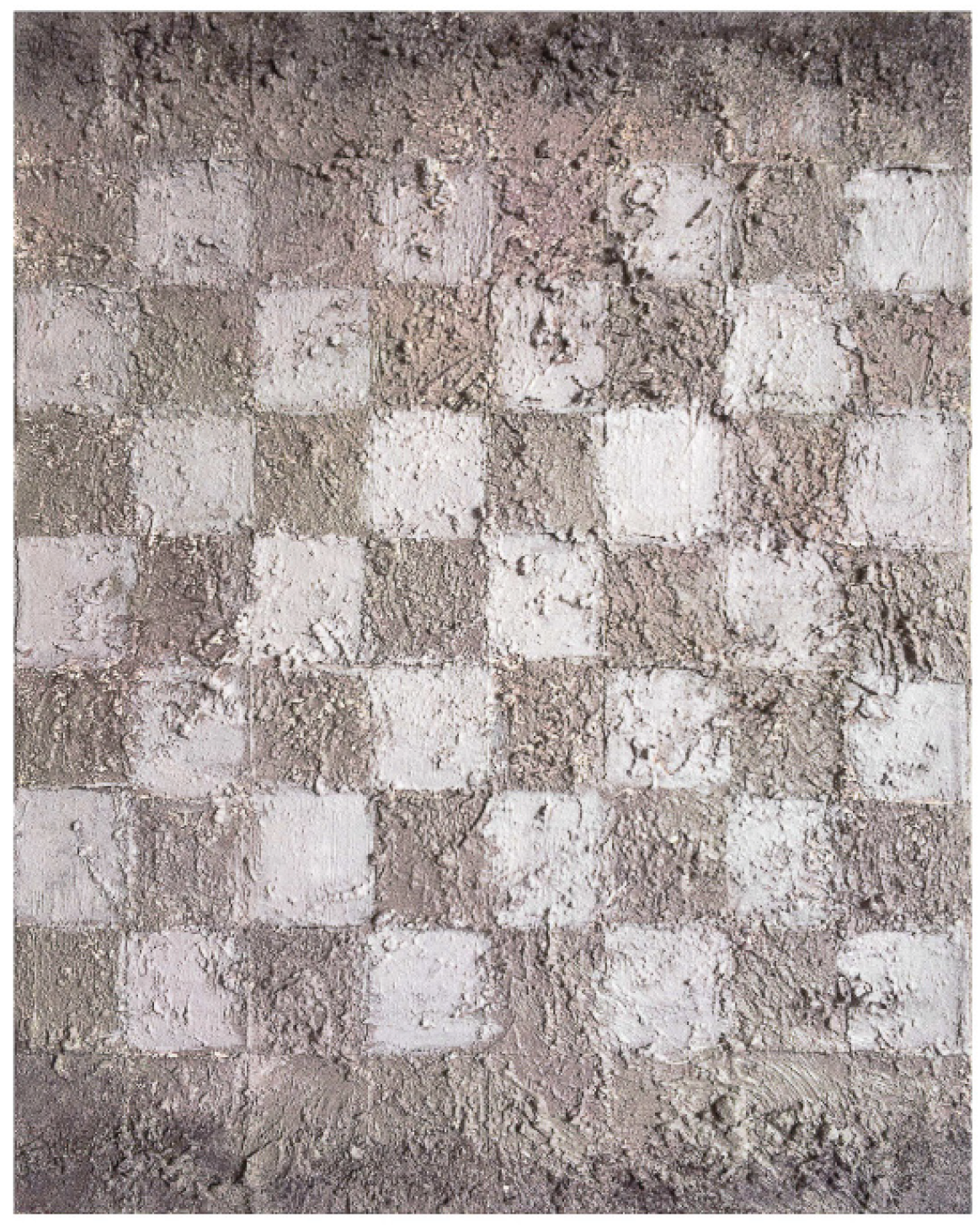Haerim Lee
It’s our pleasure to present Haerim Lee whose artwork is featured in the Community Art Collection! Haerim stimulates dialogue with communities through painting, public murals, artist books, and photography. Her practice is rooted in ethnographic research, she investigates the history of an architectural site—such as the Metropolitan Correctional Center in Chicago, Cabrini Green, and the murals on the South Side of Chicago or in Gary, Indiana and translates it into her studio practice.
We are currently exhibiting three works from her Site Specific Memories series which consists of rocks, debris from The All of Mankind mural site painted in 1972 by artist William Walker located at The Strangers Home Missionary Baptist Church, 617 W. Evergreen Ave. In addition to the collected site specific material, Haerim incorporates oil paint, architectural materials, and traditional Korean weaving techniques to memorialize and honor her own interaction with the sites she examines. The final works are rich in texture, monochromatic in color, and in spirit they hold vast history that leads us back to community. Her work is visually poetic and elastic in memory that is thoughtfully represented in each piece.
Last, we are excited to invite you to a free workshop led by Haerim Lee: Collective Printmaking on June 24, 12pm - 2pm at Baird & Warner. She will lead participants in printmaking techniques and share how you can also examine around site, location and memory. We encourage you to come with rocks from your yard or neighborhood, and personal and decorative objects that can easily be traced for this printmaking experience. Register today!
Lee graduated from the MFA Program at the School of the Art Institute of Chicago (SAIC) in the Painting and Drawing Department and the MA Program in Visual and Critical Studies.
Click to view more works by Haerim Lee.
Portrait Credit: Joel Gonzalez | We Our Story
“How to preserve an oral history? How to create inclusive space by examining, as well, a counter narrative?… It is a collective memory; this disappeared image marks an important oral history that more need to see and hear. It is a history that is polyvocal—in a way it is authentic, genuine, and a shared story. There is no boundary in accessing the story and it does not exclude anybody.”
Artist Q&A
A conversation between Michelle Ruiz and Haerim Lee
Michelle Ruiz: Tell us a little about your background and what led you to develop your art practice?
Haerim Lee: I am originally from South Korea and have been living in Chicago for the past nine years. Currently, I work as an artist and art educator, primarily teaching in the West and South Sides of the city. My neighbors while growing up in Connecticut were an African-American family. Since 2015, I have actively engaged with the African American community in Chicago on a personal level. Growing up, I had the opportunity to travel frequently with my parents, visiting relatives and families in various regions of North America. These experiences fueled my curiosity and desire to learn about different built environments. I found that I could translate my experiences into art and express my perspective through my practice.
MR: We are excited to be featuring a selection of your “Site Specific Memories” series in the Community Art Collection. Can you tell us more about what inspired this body of work?
HL: I collected some debris (scrapes, sand and rocks) from the All of Mankind site and mixed it with oil painting to create an architectural surface to reflect my memories. Although there is an abstraction without specific imagery from the mural, I emphasize texture, repetition, and physicality of the material to allude to space, memory, and history.
Weaving canvas is also a significant part of the Site Specific Memory, as it challenges the conventional notions of Western painting techniques. In this series, I embrace the use of scrap fabric or canvas and weave them together, drawing inspiration from Korean traditional craftsmanship such as ramie and jogakbo, which have historically been associated with the labor of Korean women. By incorporating these weaving techniques into my artwork, I aim to highlight the cultural and gendered dimensions of craftmanship while expanding the possibilities of artistic expression beyond traditional painting methods.
MR: Can you tell us about the narratives that you bring forth in your practice?
HL: In the series Site Specific Memories (2021-), I investigate the past and the present of the Strangers Home Missionary Baptist Church in Cabrini Green. The architecture itself represents the transformation of the community from mainly Italian-American to African-American families. In 1972, Chicago based muralist William Walker painted All of Mankind (1972) on the façade of the church. Walker is known for creating the Wall of Respect (1967), which started the community mural movement in the US.The mural All of Mankind reflects the national movement for human and civil rights during the sixties and seventies and symbolizes the unity of the human race with four intertwined figures —Jesus, Dr. King, Malcolm X, and Anne Frank. I employ the photograph, found objects, and painting to create a subjective experience of the history. I collapse the contemporary and historical moment on the two-dimensional surface.
MR: You have a two-person exhibition currently up at Chicago Public Art Group (3314 S. Morgan St, Chicago, IL 60608) titled Story of Polyvocality, can you share more about your work featured in this exhibition?
HL: I am currently having an exhibition titled Story of Polyvocality, to continue my collaboration with artist Justin Cooper. Our collaboration began in 2021, and we are currently exhibiting our collaborative pieces. Through this collaboration, we aim to push the boundaries of our artistic practice and create impactful artworks that resonate with diverse audiences. I envision our partnership as a platform for engaging conversations and exploring the intersections of our individual perspectives.
MR: We are excited for your free upcoming workshop Collective Printmaking on June 24th, can you tell us more about this workshop and what people can expect?
HL: This printmaking experience will generate dialogue with the community around the site, location, and memory. I will share stencil techniques to create multiple editions of prints and guide participants to develop their own. We encourage you to come with rocks from your yard or neighborhood, and personal and decorative objects that can easily be traced for this printmaking experience. Looking forward to seeing you there!
MR: What is the best way for people to learn more about your work?
HL: Through my work, I hope to create a space for asking questions, prompting viewers to engage actively with the artworks and reflect on their own perspectives. I believe that by cultivating this attentiveness, we can not only deepen our understanding of diverse experiences but also foster empathy, compassion, and a genuine appreciation for the richness and complexity of the place and space we inhabit.
Artist Information
Haerim Lee
IG: @rimlee_art
Website: www.rimlee.com
Click here for the catalog to view the Community Art Collection currently on display at Baird & Warner.
